Here is an account of a visit I made to Paignton about eight weeks ago, seaching for ivy bees.

Ice cream and chips, not together of course, but that’s what people are eating. The sun is shining, the sea an intense blue, the air gently warm and sun loungers have been dragged unexpectedly out of pastel-coloured beach huts. Couples stroll along the promenade arm in arm and one or two children shriek with delight as they run in and out of the waves washing over the long sandy beach. This is Goodrington Sands near Paignton in south Devon and it’s the end of September.
At one end of the beach, the ground rises steeply to Roundham Head, a cliff-lined, grass-topped promontory that interrupts the otherwise smooth sweep of Torbay. The south-facing side of the headland is home to the Cliff Gardens with its terraced flower beds, zigzag paths and mild microclimate supporting many tender sub-tropical plants. A colony of winter bumblebees also flourishes here, nurtured by the almost year round supply of pollen and nectar.
The flat, grassy surface of the promontory eventually gives way to residential streets but before suburbia takes over completely, there is a transitional region, a mosaic of green rectangular spaces and tall, red-brick walls. Nowadays, the area is popular with dog walkers but, in one wall, there is an intriguing, curved-top gateway, hinting at older usages. These walls, now mostly covered with ivy, are the remnants of the kitchen gardens of a nearby Victorian villa.
About a year ago, I discovered these old walls covered in full-flowering ivy with many ivy bees taking advantage of their preferred food. The ivy bee (Colletes hederae) is the last solitary bee to emerge each year and is very distinctive with its yellow and black-striped abdomen and chestnut-haired thorax. I looked for the nest area but, although I found a few small nest aggregations, I was unable to find anywhere large enough to support the number of bees I had seen.
Today, I park in a street bordering the old kitchen garden. Ivy cascades over the wall by the car, its many pale green flower heads scenting the air with their sickly-sweet smell. Insects move about the ivy constantly, flying to and fro, ignoring me to the extent that we sometimes collide. I see hoverflies, wasps, one or two bumblebees and honey bees, and hundreds of ivy bees. The male ivy bees fly about edgily, sometimes stopping to feed, sometimes pausing on a leaf to preen and rest. The females, noticeably larger than the males, carry chunks of chrome yellow pollen on their back legs and abdominal hairs but continue feeding. Sometimes a hopeful male disturbs them, attempting to mate, but they show no interest in their new suitors. Movement is constant, there is an insistent low buzz and this liquid energy steps up in the sunshine. The same liquid energy abounds wherever the ivy is in flower on these old walls. There is a lot of ivy here and that means many ivy bees.
But where are the nests? Last year I found one small nest area in some exposed red soil along the cliff-side path descending from Roundham Head to Goodrington so that’s where I begin today. Sure enough there are still holes in the cliff face together with crumbly soil suggesting active nests. Around these holes there are hundreds of ivy bee males performing what my friend Susan Taylor has christened the “sun dance”. They fly about incessantly, swinging from side to side, occasionally stopping to look into one of the holes but emerging unsuccessfully. It’s an impressive sight along a two metre stretch but what is lacking are any females and anyway it doesn’t feel like a big enough area to account for all the bees on the ivy so I decide to walk down to Goodrington to look at the sea.
As I stand by the beach, I see someone walking down another steep path from Roundham Head. I hadn’t noticed this paved path before: it runs parallel to the cliff-side path but about three metres inland and is partly hidden behind a low hedge. I decide to take a look. The path is bordered on one side by a low bank covered in short, rough grass and hundreds of ivy bee males fly about, skimming the surface, “sun dancing”. When I get closer, I see that the red soil in the bank is peppered with many holes and crumbly soil is spilling out showing that the bank contains active nests.
The males here seem particularly edgy, they constantly investigate the burrows, presumably looking for females and sometimes they even try to mate with one another, not a clever move. On several occasions I notice the males suddenly congregating to form a rough ball. Other males soon join the melee rather like rugby players in a ruck. Somewhere in the middle there must be a female who has just emerged from one of the burrows. The males are trying frantically to mate with her but only one will be successful and I see one copulating couple fly off together, still attached.
There is also a slow but steady stream of females returning to the nest area loaded with yellow pollen. They have come to deposit food in their burrow for their larvae, but finding their nest looks a bit hit and miss. Some approach the area and fly around for a short time before landing and making their way on foot. Others seem to crash land and then pull themselves together after a short rest. The males show no interest in these already-mated females.
The aggregation covers an area about ten metres by half a metre and there must be hundreds of nests. This is a large, very active, nest site and looks big enough to support a huge number of ivy bees. I can’t say whether there are other nest aggregations in the area but this one goes some way to explaining the large number of ivy bees seen at Roundham Head.
I am completely absorbed watching these creatures go about their lives; it’s like being allowed through a door into another world. But then I look up and see, no more than 20 metres below me, an ice cream kiosk with people enjoying their Devon Farmhouse ice cream. Dogs dash along the hard sand splashing in the water. A steam train struggles up the bank hauling vintage chocolate and cream coaches towards Kingswear.
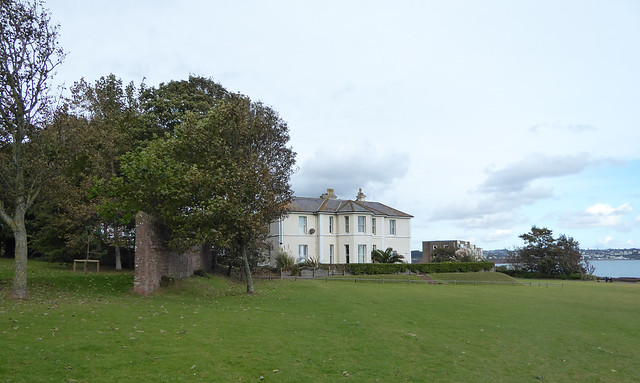


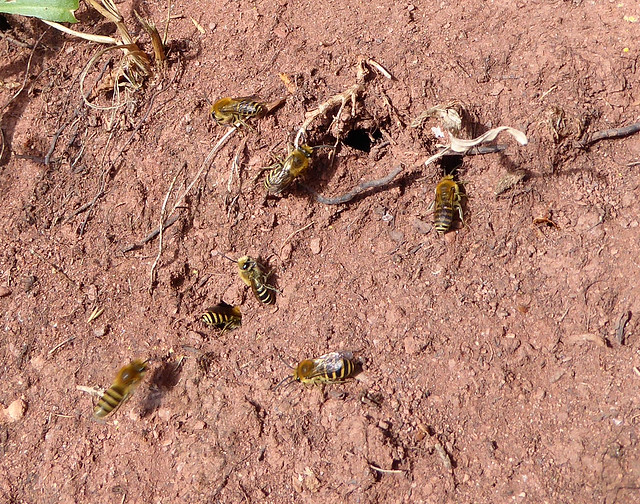
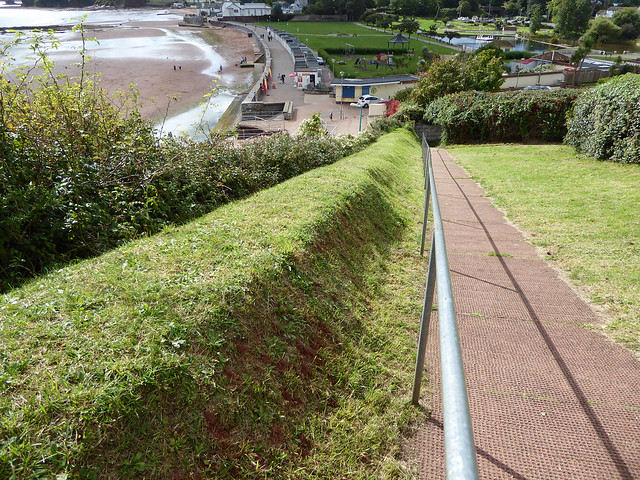
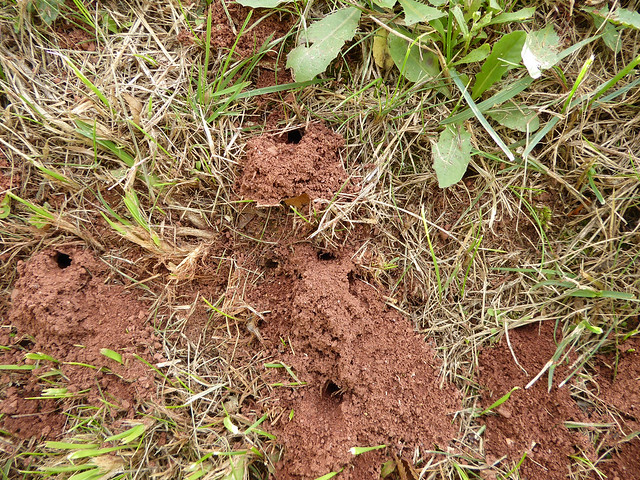


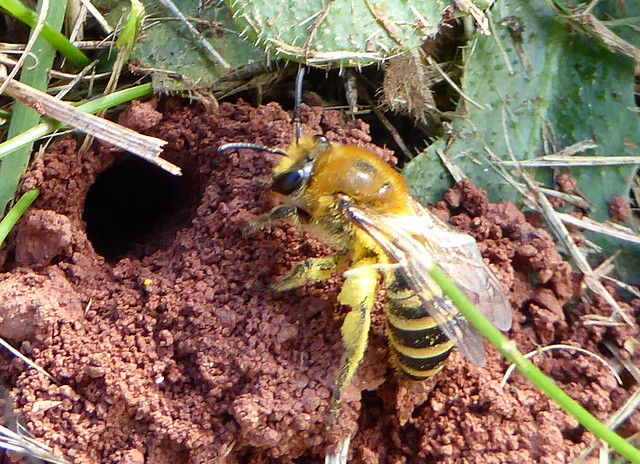


You were lucky to discover that hidden path! It was wonderful to see the sun dance and mating ball. It is surprising the weather is mild enough for the bees to be around all winter. I have been looking at ivy more closely here but haven’t see any bees yet! Sarah x
LikeLike
Thanks Sarah. I was very lucky to find the path and I was totally entranced to see the behaviour of the ivy bees so close up. They are now finished for the year but they will be out again late August/early September 2017.
As for the bumblebees that fly through the winter I think it is a combination of the mild microclimate and the presence of flower forage throughout the season. There is a lot of rosemary in the seafront gardens in Lyme Regis so you might find winter bumblebees there. I shall be down there around Christmas and will have a look myself.
LikeLike
Fascinating sights! Thank you for sharing.
LikeLike
Thanks Mark.
LikeLiked by 1 person
Wow! what a drama unfolding in the bee world, I was completely taken up with the search for nests and it sounds so dangerous to be that female in the middle! I’m sure they know what they are doing. I was transported back to a lovely late Summer day. Thank you Philip.
LikeLike
Thanks Sue, I am glad you enjoyed the bee drama. Yes, I also wondered about the female with all those males about her but the species seems to be doing very well. I think it all works on the basis of huge redundancy in numbers.
LikeLike
Hmm, I’ve heard of bees on ivy. We get plenty of that around here. But ivy bees…. Thanks for the great post!
LikeLike
Thanks! Ivy bees are one of my favourites and I never tire of watching them.
LikeLike
Wonderful photographs, not only of the bees but of the whole area. There is a lot of flowering ivy on the villa. I think it must be well situated to catch the sun to produce so many flower heads. In wooded areas the ivy only manages to flower profusely if it reaches the tree tops. The stretches of nest sites that you have found are much larger than I have seen. Next year it would be interesting to see if you spot any cuckoo bees at the nest sites. I was contacted by someone who was writing a paper on a cuckoo bee of Colletes hedera. Did you see any suspicious characters lurking around the nests? Amelia
LikeLike
Thanks Amelia, it does seem to be a very good place for both ivy and the ivy bees. I dont recall seeing any cuckoo bees. I think you are referring to Epeolus, I saw part of your discussion about these and I think I would have noticed, but I will look more carefully next year.
LikeLiked by 1 person
Beautifully observed – I felt like I was there. You write really well. I tried to spot ivy bees this autumn but sadly only saw honey bees and wasps on the ivy.
LikeLike
Thanks for your kind comments, Emily, I am pleased you liked this. I can only assume the ivy bee has not made it to your part of London. Down here it is very patchy – for example they are found all along the coast where there is ivy but they dont make it to Totnes some 15 miles inland despite large amounts of ivy. I had a look at the BWARS map and there do seem to be reports for the London area so keep looking next year!
LikeLike
Thanks Philip. I think I’ve spotted them in Ealing before and I’m sure they will be in multiple London locations. Hopefully I’ll have better luck next year!
LikeLiked by 1 person
Fantastic writing, as always, Philip. I love the idea of the kitchen gardens overlooking the prom and beach huts – so very different from my bit of windswept coast at the opposite end of our small island. I also enjoyed the way you structured the piece so that we make the discovery of the nests alongside you – makes for an exciting read! Best wishes, Laura
LikeLike
Thanks for your kind comments, Laura, they are much appreciated. I like anywhere by the sea, it is never dull. Even though Roundham Head is a bit urban, I have become very fond of the area, I think it is the combination of the sea with almost year-round flowers and lots of wildlife, especially bees.
LikeLike